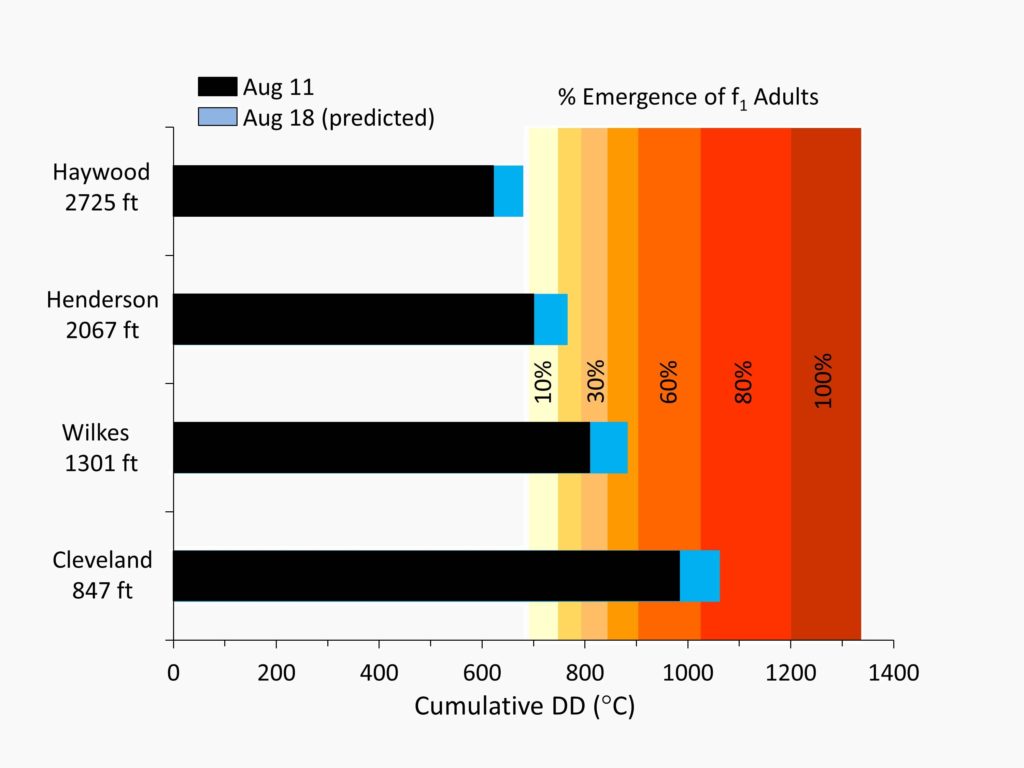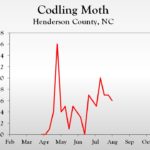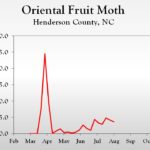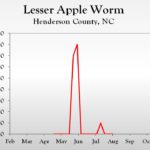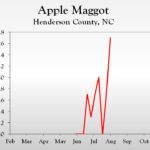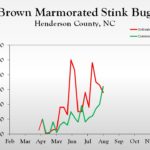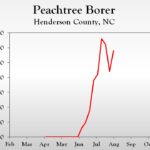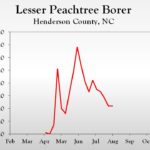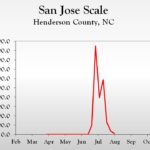WNC Orchard Insect Pest Populations – August 11, 2020
go.ncsu.edu/readext?720705
en Español / em Português
El inglés es el idioma de control de esta página. En la medida en que haya algún conflicto entre la traducción al inglés y la traducción, el inglés prevalece.
Al hacer clic en el enlace de traducción se activa un servicio de traducción gratuito para convertir la página al español. Al igual que con cualquier traducción por Internet, la conversión no es sensible al contexto y puede que no traduzca el texto en su significado original. NC State Extension no garantiza la exactitud del texto traducido. Por favor, tenga en cuenta que algunas aplicaciones y/o servicios pueden no funcionar como se espera cuando se traducen.
Português
Inglês é o idioma de controle desta página. Na medida que haja algum conflito entre o texto original em Inglês e a tradução, o Inglês prevalece.
Ao clicar no link de tradução, um serviço gratuito de tradução será ativado para converter a página para o Português. Como em qualquer tradução pela internet, a conversão não é sensivel ao contexto e pode não ocorrer a tradução para o significado orginal. O serviço de Extensão da Carolina do Norte (NC State Extension) não garante a exatidão do texto traduzido. Por favor, observe que algumas funções ou serviços podem não funcionar como esperado após a tradução.
English
English is the controlling language of this page. To the extent there is any conflict between the English text and the translation, English controls.
Clicking on the translation link activates a free translation service to convert the page to Spanish. As with any Internet translation, the conversion is not context-sensitive and may not translate the text to its original meaning. NC State Extension does not guarantee the accuracy of the translated text. Please note that some applications and/or services may not function as expected when translated.
Collapse ▲Brown marmorated stink bug adult emergence is becoming more widespread, while apple maggot and oriental fruit moth numbers increased in the past week.
Brown Marmorated Stink Bug
Emergence of first-generation BMSB adults is approximately 50% complete in the Cleveland/Lincoln County area, while in Wilkes and Alexander Counties about 20% of the population has emerged (see emergence figure below). BMSB poses a threat to crops in these areas that have significant populations. Emergence is just beginning in Henderson County, so the threat of damage will increase significantly in the next week or so. In Haywood County and similar elevations, emergence is still at least a couple of weeks off.
Codling Moth, Oriental Fruit Moth, and Apple Maggot
Second generation codling moth is essentially complete throughout the area, and third generation populations are only expected in areas that have experienced problems up to this point. Both OFM and apple maggot trap captures increased over the past week, which is expected at this time of the year. Although numbers of these latter two pests were not particularly high at our monitoring sites, populations can vary considerably from orchard to orchard.
Below is a summary of the activity of various insecticides against the key pests of concern at this time, albeit those with a preharvest interval of no more than 21 days:
Insecticide range of activity against key insect pests of apple during August and September. (X = has activity)
| Common name | Brand name | Pre-harvest interval | BMSB | OFM | Codling moth | Apple maggot |
| Pyrethroids | ||||||
| Bifenthrin* | Brigade, Bifenture | 14 | X | X | ― | X |
| Beta-cyfluthrin | Tombstone | 7 | X | X | ― | X |
| Cyfluthrin | Baythroid | 7 | X | X | ― | X |
| Fenpropathrin | Danitol | 14 | X | X | ― | X |
| Gamma- cyhalothrin | Proaxis | 14 | X | X | ― | X |
| Lambda-cyhalothrin | Karate | 21 | X | X | ― | X |
| Zeta-cypermethrin | Mustang Maxx | 14 | X | X | ― | X |
| Neonicotinoids | ||||||
| Chlothianidin | Belay | 3 | X | ― | ― | X |
| Dinotefuran* | Venom, Scorpion | 3 | X | ― | ― | ― |
| Premixes | ||||||
| Lambda-cyhalothrin + chlorantraniliprole | Besiege | 21 | X | X | X | X |
*Bifenthrin and dinotefuran have Section 18 emergency exemption labels.
Learn more about southeastern apple insect pests at the Apple Insect Management page.
2020 Average Weekly Trap Captures
| HENDERSON COUNTY | |||
| Insects per trap | |||
| Jul 27 | Aug 3 | Aug 10 | |
| Codling moth | 0.7 | 0.7 | 0.6 |
| Oriental fruit moth | 4.8 | 4.2 | 3.6 |
| Tufted apple bud moth | 0.5 | 0.0 | 5.5 |
| Redbanded leafroller | 0.0 | 0.0 | 0.0 |
| Obliquebanded leafroller | 1.0 | 1.0 | 0.0 |
| Lesser appleworm | 0.0 | 0.0 | 0.0 |
| Apple maggot (abandoned and research orchards) | 0.0 | 0.7 | 1.7 |
| Brown marmorated stink bug (commercial) | 1.7 | 2.0 | 3.2 |
| Brown marmorated stink bug (unsprayed) | 3.5 | 3.3 | 2.8 |
| Spotted tentiform leafminer | 16.0 | 8.0 | 0.0 |
| Dogwood borer | 6.0 | 25.0 | 7.0 |
| Peachtree borer | 31.0 | 22.0 | 29.0 |
| Lesser peachtree borer | 28.0 | 22.0 | 22.0 |
| San Jose scale | 265.0 | 72.5 | 17.5 |
*Note that these averages illustrate only the timing of insect emergence and fluctuations in populations, and are not representative of population levels in any given orchard. The only way to have an accurate assessment of an individual orchard’s populations is to set up traps in that orchard.
2020 Accumulated Degree Days
| HENDERSON COUNTY | ||||
| Jul 27 | Aug 3 | Aug 10 | ||
| Codling moth (Biofix 4/20) | 1581 DD | 1781 DD | 1917 DD | |
| Oriental fruit moth (Biofix 3/30) | 2218 DD | 2459 DD | 2625 DD | |
| Tufted apple bud moth (Biofix 4/27) | 1960 DD | 2201 DD | 2367 DD | |
2020 Pest Trends (Click to Enlarge)
Visit WNC Orchard Insect Populations for archived posts.
Additional Resources
- Apple Insect Management Overview
- How to Monitor Apple Insect Pests (IPM)
- Brown Marmorated Stink Bug in North Carolina
- Integrated Orchard Management Guide for Commercial Apples in the Southeast
- Walgenbach Entomology Lab




